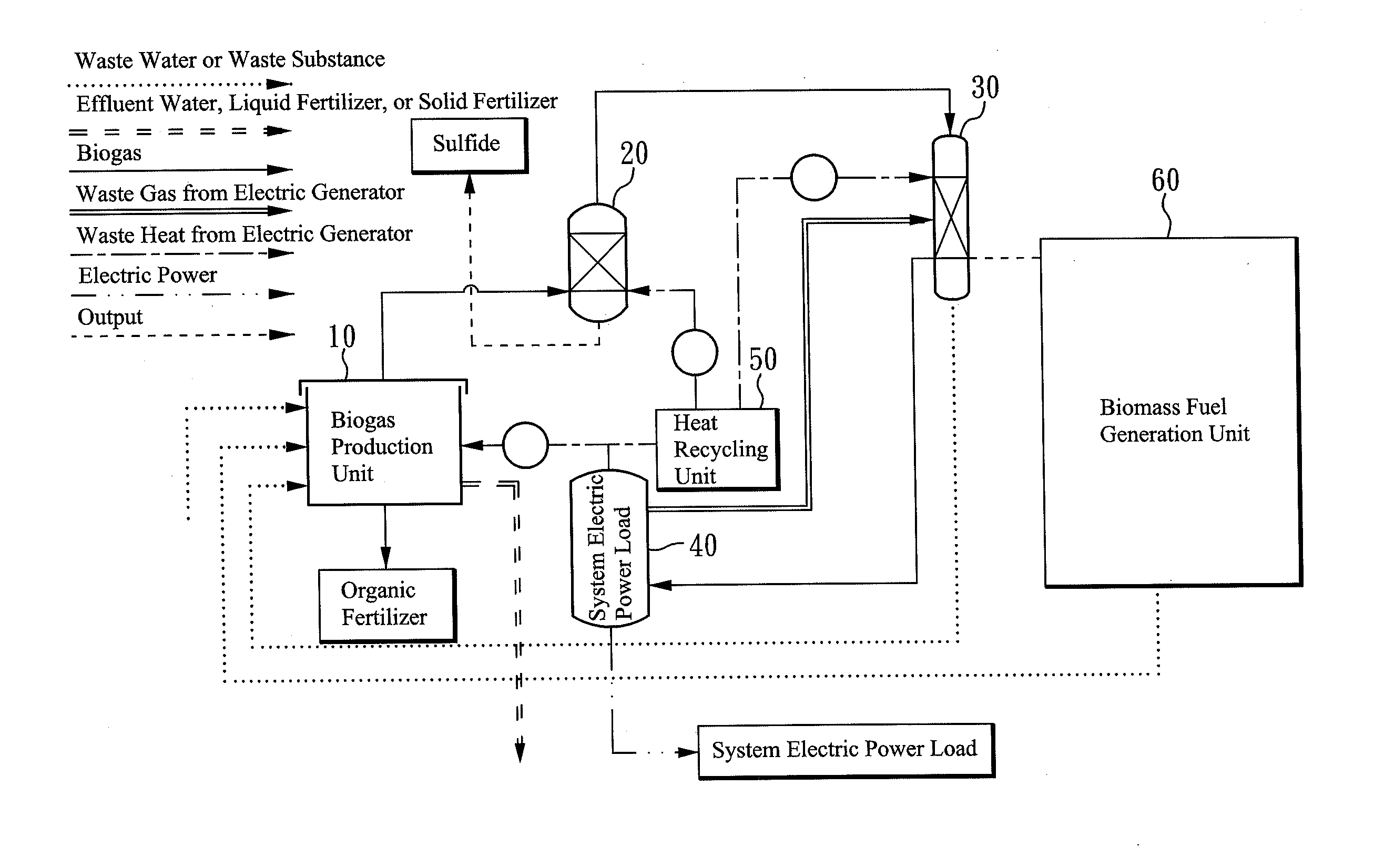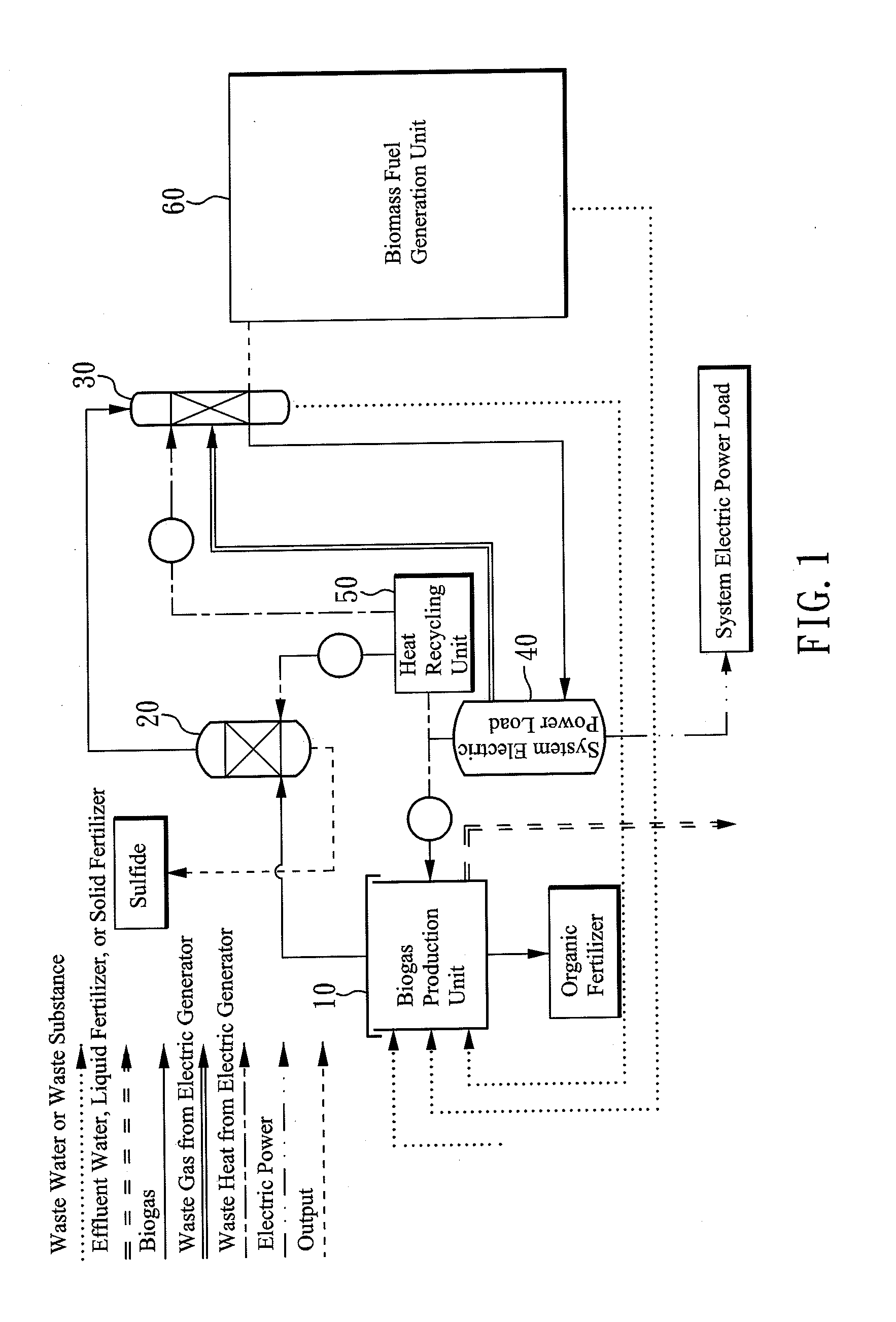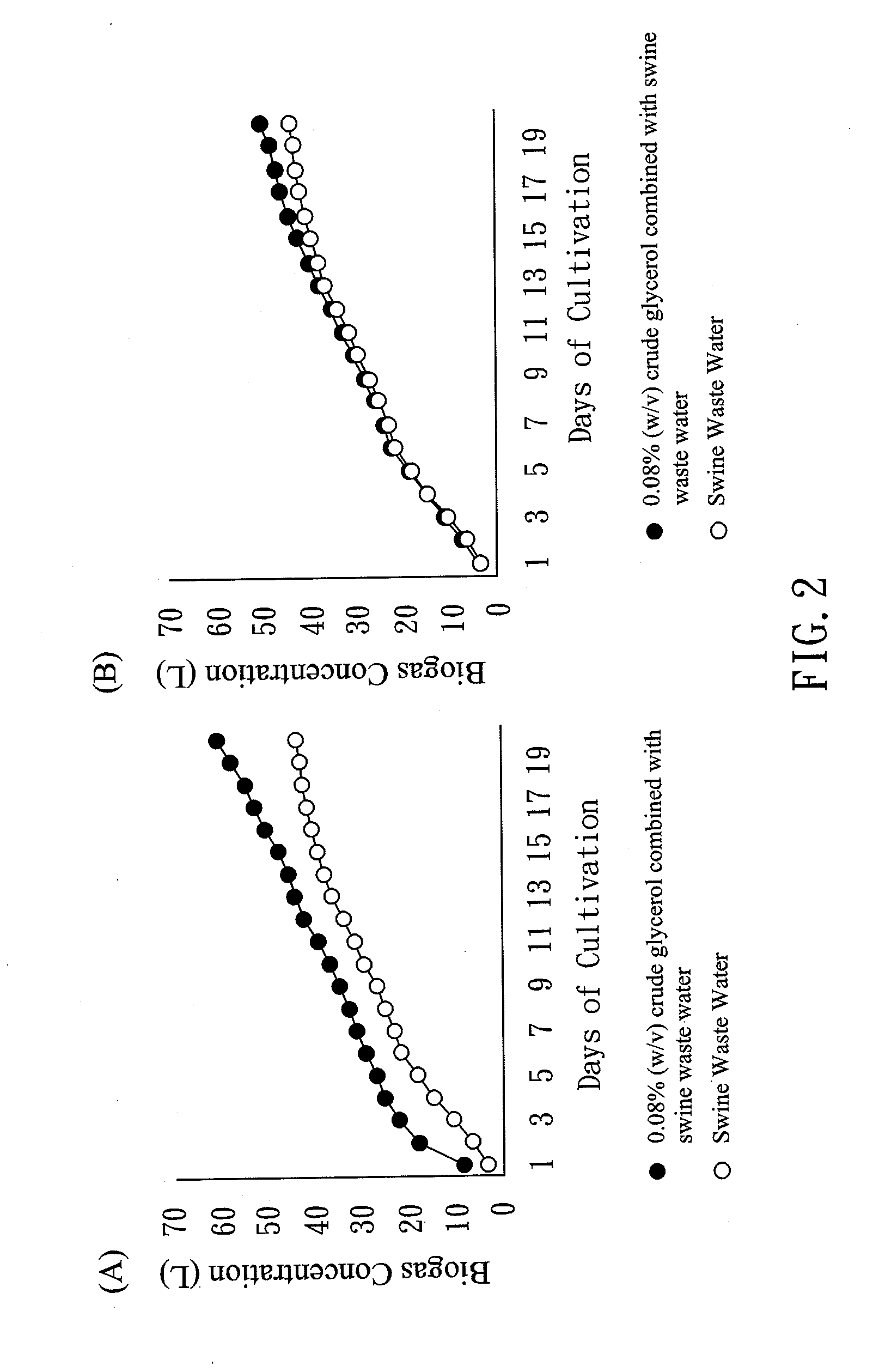Microalgae for Removal of Carbon Dioxide Generated from Biogas and Biogas Electric Generator
a technology of carbon dioxide and microalgae, which is applied in the field of microalgae for the removal of carbon dioxide generated from biogas and biogas electric generators, can solve problems such as the build-up of greenhouse effects, and achieve the effects of reducing the concentration of carbon dioxide in waste gas and facilitating the removal of hydrogen sulfid
- Summary
- Abstract
- Description
- Claims
- Application Information
AI Technical Summary
Benefits of technology
Problems solved by technology
Method used
Image
Examples
experimental example 1
[0036]Referring now to A Mutant Strain of Microalga Chlorella sp. for the Carbon Dioxide Capture from Biogas by Kao C—Y et al., Biomass and Bioenergy (2012) 36: 132-140, preparation and growing of Chlorella sp., wherein the culture medium is a modified f / 2 medium, which is arranged by man-made seawater, and comprises 29.23 g / L NaCl, 1.105 g / L KCl, 11.09 g / L MgSO4.7H2O, 1.21 g / L Tris-base, 1.83 g / L CaCl2.2H2O and 0.25 g / L NaHCO3 and at the same time comprises 0.3% (v / v) macro elemental solution and 0.3% trace elemental solution, wherein the trace elemental solution has 4.36 g / L Na2.EDTA, 3.16 g / L FeCl3.6H2O, 180 mg / L MnCl2.4H2O, 10 mg / L CoCl2.6H2O, 10 mg / L CuSO4.5H2O, 23 mg / L ZnSO4.7H2O, 6 mg / L Na2MoO4.2H2O, 100 mg / L vitamin B1, 0.5 mg / L vitamin B12 and 0.5 mg / L biotin. The initial pH value of the culture medium sits between 7.4 and 7.6.
[0037]Acrylic column is used as a Chlorella sp. growing column, whose length is 2.5 m, diameter is 20 cm, and working volume is 40 L. Swine wastewate...
experimental example 2
[0039]Referring now to Taiwan Patent No. M410052, whose title is translate into “Wastewater Treatment Device for Effectively Producing Methane.” The experimental example here involves adding respectively grown microalgae or residue or crude glycerol, both of which extracted from biomass diesel fuel, into wastewater treatment device, using batch-based culturing to produce biogas, and compares biogas production results as coming from regular wastewater and from presence of algae residue or crude glycerol. More particularly, FIG. 2(A) shows the experimental result from comparing presence of 0.08% (w / v) crude glycerol, FIG. 2(B) shows the experimental result from comparing present of 0.01% (w / v) algae residue. As shown by FIG. 2, in the situation where hydropower is stayed for 8 days, and for 0.8 g crude glycerol and 0.1 algae residue added per liter, the biogas production capacity can be raised respectively to 39% and 14%, for which the conversion result shows for each gram of added cr...
experimental example 3
[0041]In another embodiment, an acrylic column having a length of 3 m, a diameter of 16 cm, a working volume of 50 L is used as a Chlorella sp. growing column. Sources of gas introduced hereinto include: 1. Biogas produced from swine waste water, the carbon dioxide content in the biogas is 20±5%, after the biogas is desulfurized by way of chemisorption, or biofiltration concentration of hydrogen sulfide is lowered to be below 100 ppm, 2. Waste gas produced from electric generator, the carbon dioxide content in the waste gas is 15±0.6%. Biogas and air are each given 30 minutes to be passed into microalgae group column, of which five columns are included, wherein biomass concentration are 0.5 g / L, 1 g / L, 1.5 g / L, 2 g / L and 2.5 g / L, respectively. When gas flow rate is 0.05 vvm, 8 cycles are continually kept watched, and carbon dioxide concentration in the gas outflow and inflow are sampled.
[0042]As indicated by the experimental results in FIG. 3, desulfurized biogas in FIG. 3(a) is pas...
PUM
| Property | Measurement | Unit |
|---|---|---|
| volume | aaaaa | aaaaa |
| diameter | aaaaa | aaaaa |
| diameter | aaaaa | aaaaa |
Abstract
Description
Claims
Application Information
 Login to View More
Login to View More - R&D
- Intellectual Property
- Life Sciences
- Materials
- Tech Scout
- Unparalleled Data Quality
- Higher Quality Content
- 60% Fewer Hallucinations
Browse by: Latest US Patents, China's latest patents, Technical Efficacy Thesaurus, Application Domain, Technology Topic, Popular Technical Reports.
© 2025 PatSnap. All rights reserved.Legal|Privacy policy|Modern Slavery Act Transparency Statement|Sitemap|About US| Contact US: help@patsnap.com



